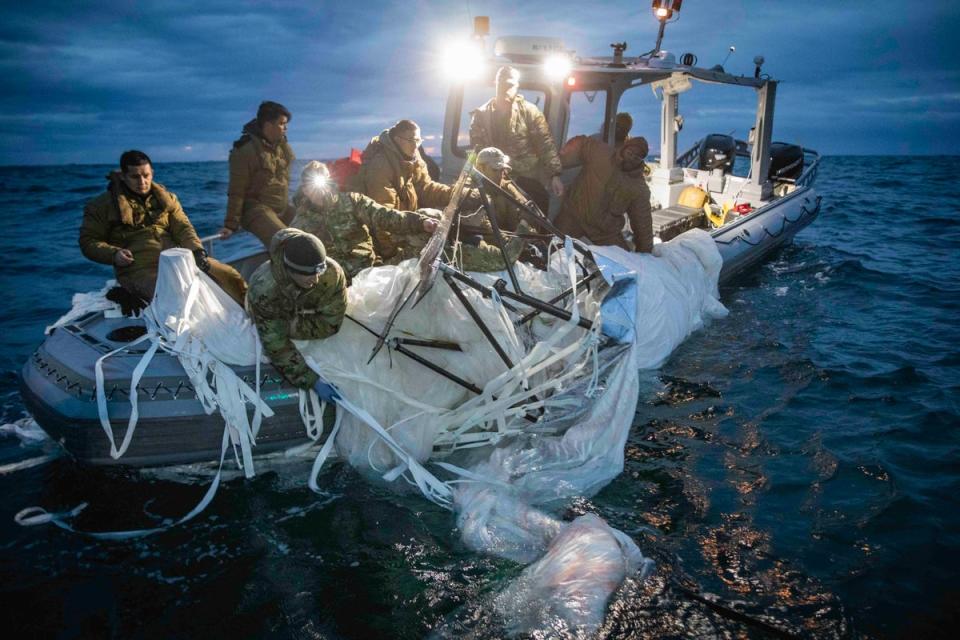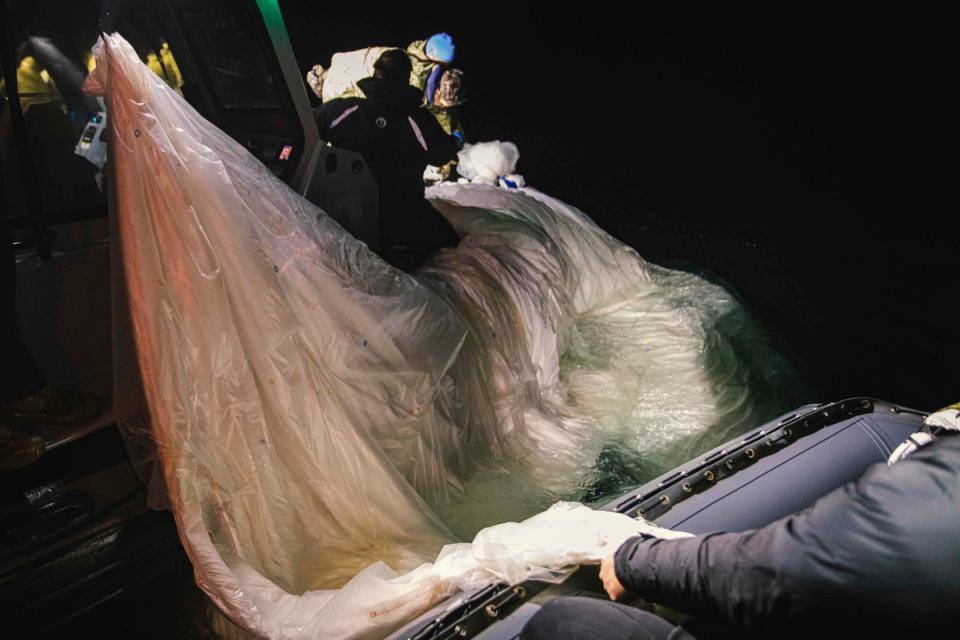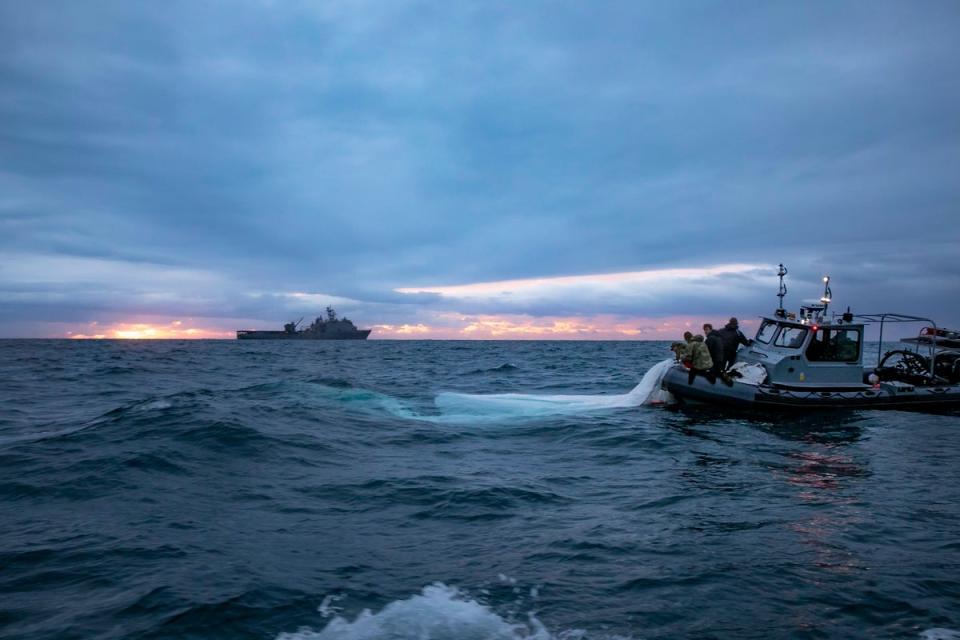First images of Chinese spy balloon debris pulled from Atlantic Ocean released by US Navy
New images released by the US Navy show the debris from a destroyed Chinese spy balloon being pulled from the water in the Atlantic Ocean.
The images are the first close-up look at the object that Pentagon officials described as a “high-altitude surveillance balloon” that was discovered travelling over sensitive US military sites last week.
The balloon was shot down over the ocean on Sunday off the coast of South Carolina after being tracked across the US for days by the military.
The new photographs are dated 5 February, the day after the balloon was downed by an F-22 Raptor jet.
The mission to collect the debris started at around 10am local time on Monday after rough waters meant it was deemed unsafe to begin on Sunday, the Department of Defense said in a statement.
“Precautions are being taken during the salvage operation in case explosives or toxic substances are present,” said Gen Glen VanHerck, head of US Northern Command. “Due to changing ocean currents, it’s possible that some debris could escape notice and wash ashore.”
The discovery of the balloon over Montana on Wednesday prompted the US military to scramble jets and led to the cancellation of a high-profile visit to China by US secretary of state Antony Blinken.
US Navy pulls Chinese spy balloon debris from the Atlantic Ocean




China’s foreign ministry said in a statement last Friday that the aircraft was a “civilian airship” that had blown off course due to wind. It added that the airship was being used for “research, mainly meteorological purposes” and had “limited steering capabilities”.
White House officials and the Pentagon revealed in recent days that similar crafts had flown above the US in previous years, including at least three times during former president Donald Trump’s administration, as part of what national security officials have described as a years-long Chinese global surveillance programme.
”It is something that they’ve been working on for many years, and that they have tried to improve … in terms of capability, range [and] communication,” White House National Security Council spokesperson John Kirby told reporters in a phone briefing on 6 February.
Those previous flights were “brief” and “nothing like we saw last week,” he added.


